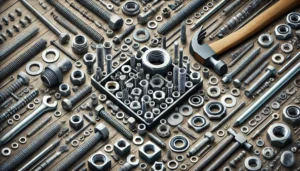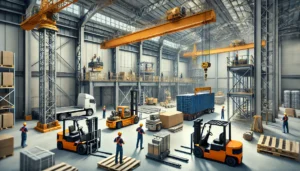Because of their superior flexibility and unique characteristics, sheets made of rubber also have numerous applications in the industry. They enhance performance, ensure safety, and provide cost-effective solutions across multiple sectors. Here are the ten most common ways rubber sheets can be used in an industrial setup:
1. Seals and Gaskets
Rubber sheets are mainly preferred for making seals and gaskets, highly crucial components for counteracting leakages in pipelines, machines, and tools. Neoprene and EPDM rubber stands out from the pack for its durability against oils, chemicals and weather thus making it ideal for seal construction in automotive, aerospace, and manufacturing industries. These seals are of utmost importance, malfunctioning seals can result in operational damages on a large scale.
2. Vibration Damping and Isolation
Machinery and tools in industries come hand in hand with vibration, and with such powerful tools, comes noise pollution. Rubber sheets are an ideal solution to such problems as they dampen and isolate vibrations while absorbing the mechanical energy and lowering transmission. This type of application vastly improves the life of the equipment and creates a safe workplace. The elasticity of rubber naturally allows it to serve as an anti-vibrating tool like none other, especially in heavy machinery.
3. Flooring and Matting
Rubber sheets are common in industrial floorings and matting because of their slip-resistant properties and durability. They also provide cushioning that alleviates fatigue for workers who are standing during long shifts and protect against electrical injuries. Rubber flooring is useful for industries like manufacturing, warehousing, and laboratories. Furthermore, anti-static rubber matting is used in electronics manufacturing because it is built to avoid electrostatic discharge.
4. Conveyor Belts
Rubber sheets are imperative when manufacturing conveyor belts that are used to move materials in industries like mining, agriculture, and food processing. Such rubber products are easily moldable and strong. The molded rubber allows conveyor belts to transport heavy and abrasive materials without damage to the belt. Advanced rubber compounds are now being used to enhance heat and chemical resistance, further expanding their usability in challenging environments.
5. Insulation
Rubber is ideal for electrical insulation because of its superior insulating properties. Rubber sheets are wrapped around cables, transformers, and other electrical mechanisms to insulate them and electrical leaks that may occur and help improve safety in power generation and distribution industries. Rubber also assists in thermal insulation by helping retain temperatures of industrial equipment.
6. Protection Wrappings
Industrial sectors that have to handle aggressive materials use rubber sheets as protection coverings over tanks, pipes, and processing machines. Compounds like natural rubber can withstand high chemical exposure and help prevent corrosion while increasing equipment life. Rubber linings are essential in protecting critical infrastructure in industries like chemical processing, mining, and even water treatment.
7. Roofing Coat
EPDM rubber sheets are one of the most abundant types of roofing membranes used in the construction sector. They withstand extreme temperatures, UV radiation, and ozone which makes them the perfect addition for waterproofing and protecting structures, saving energy and increasing durability. These membranes are a great aid in places that experience severe weather changes, making them the best defense against leaks and overheating of buildings.
8. Sound Reduction
Rubber sheets contribute to engineering soundproofing materials in industrial locations as noise barriers by absorbing and damping sounds. They are utilized in walls, floors, and machine enclosures shielding to create a more compliant and noise pollution free environment. Rubber soundproofing is also common in many industrial facilities which are located close to residential areas to meet local noise control policies.
9. Hose and Tubing Production
Hoses and tubes are produced from rubber sheets due to their flexibility and elasticity. They are used in many different industries, such as automotive, chemical, or even food. Rubber hoses are designed for high pressure and temperature so that fluids and other gases can be transported safely. Specialized rubber compounds are formulated because some hoses need to have better resistance to chemicals for disabled harsh industrial environments.
10. Expansion Joints
Rubber sheets are processed to make expansion joints that allow for thermal expansion and contraction within pipelines and other structures. This type of joint prevents damages that changes in temperature may cause as well as vibration or mechanical movement. The expansion joints ensure the system will last and remain functional even with these movements. These kinds of joints are important in other industries, for example, oil and gas, because they must ensure there will not be spills due to the pipe’s shifts.
Conclusion
To wrap things up, rubber sheets have an important part in optimizing the functionality, safety, and effectiveness of all industrial applications. The ability to change with the given environment and requirements makes them important to many industries. From providing protection for the machines and safe environment to noise reduction and even energy saving, rubber sheets are one of the most important sources for industrial innovation. With the progress of technology, there will increasingly be a demand for high performance rubber materials which will create possibilities for even more special and environmentally friendly uses for the material.










